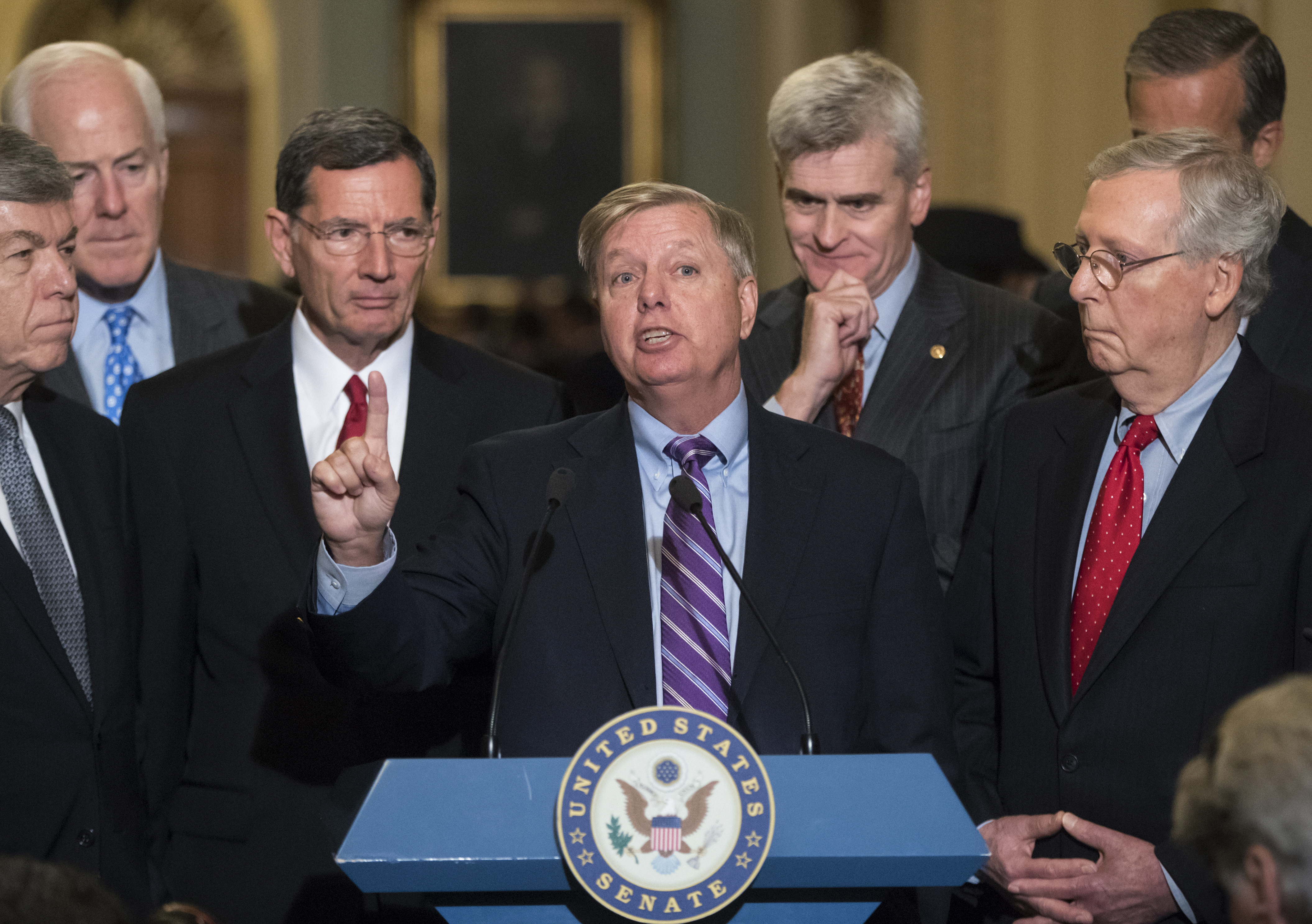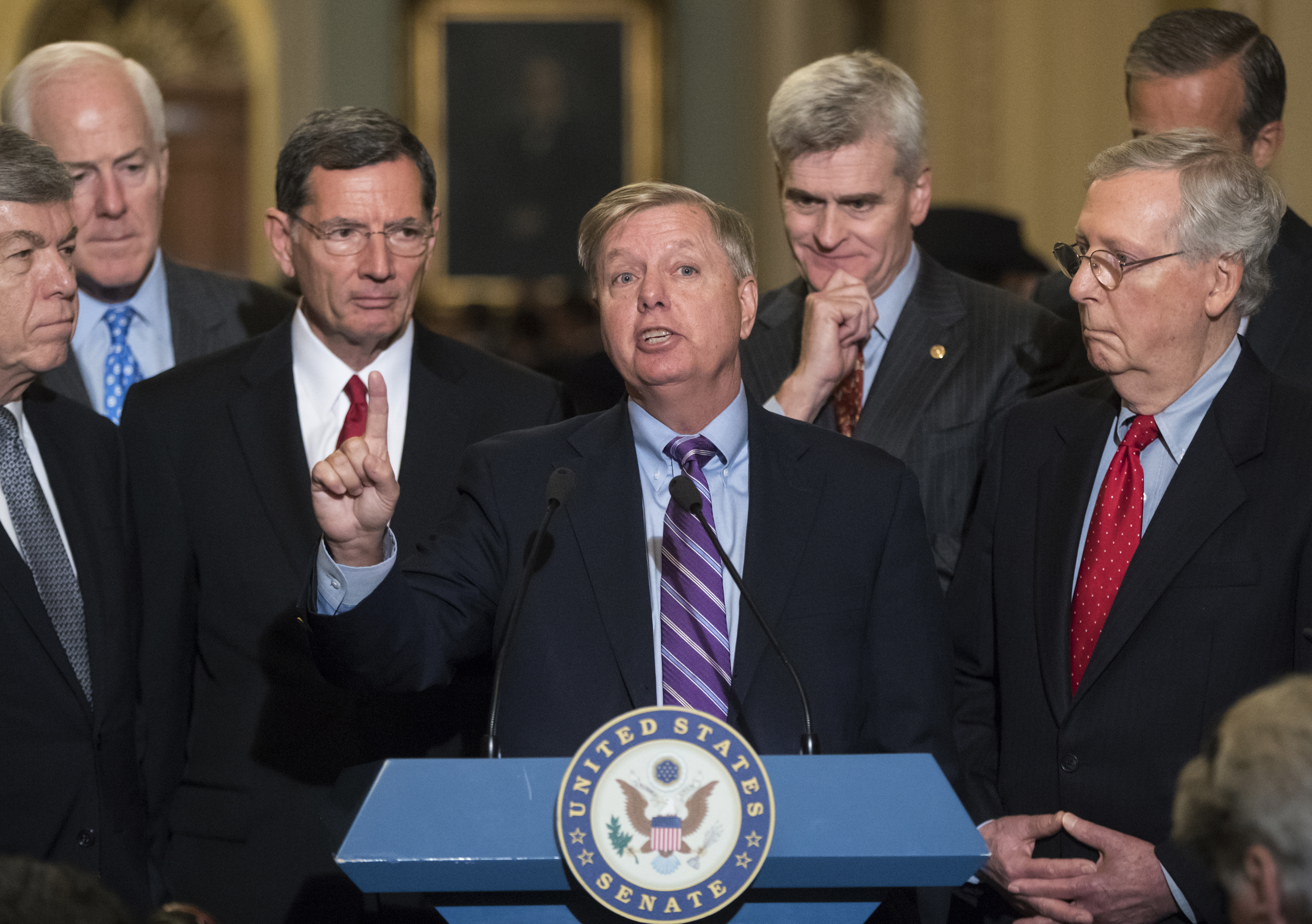How the Graham-Cassidy bill would impact young people
{$excerpt:n}


(AP Photo/J. Scott Applewhite)
Sens. Lindsey Graham (R-SC), Dean Heller (R-NV), Bill Cassidy (R-LA), and Ron Johnson’s (R-WI) health care plan or the GCHJ health care bill is designed to give power back to the states.
The GCHJ bill provides federal block grants to states and allows each state to decide how to take care of their constituents best. To provide the funding for states, the plan would eliminate Medicaid expansion, cost-sharing subsidies to insurance companies, Obamacare tax credits, and the individual and employer mandates.
These changes could present more cost-effective options for young people. Also, by eliminating the employer mandate, businesses could offer more full-time jobs. However, the catch is that the states have the power to enact their own mandates, and can re-impose subsidies at the state level.
Under the current system, the Affordable Care Act (ACA), also known as Obamacare, makes companies with more than 50 full-time employees offer healthcare. ACA also penalizes individuals who do not have health insurance by making them pay a fine. These mandates have caused employers to lay off employees and or place many workers on a part-time schedule. By not being forced to provide insurance coverage, businesses would be allowed to hire more full-time employees.
The GCHJ bill proposes to grant states money based on the population of beneficiaries. The states will be given money each year and then have the power to decide where that money goes.
States could then apply to end some of the ACA policies. One of the policies that states could apply to waive is the price restriction policy. Price restriction policies under ACA make it so that older people cannot be charged more for a policy than young adults. For millennials, waiving this policy means insurers can offer more competitive prices for young people.
The bill takes away the limit that individuals and families can put into their health savings accounts. Currently, individuals and families can only put a certain amount of pre-taxed money into their HSA. The GCHJ would not only allow you to set aside more money to save for HSA, but also states could allow individuals to use the pretax money to pay for their health insurance premiums, which was not previously allowed.
The ACA also required insurers cover the ‘10 essential health care benefits,’ some of which included outpatient care, mental health and substance abuse disorder services, pediatric care, maternity care, and counseling. With the proposed GCHJ plan, states can apply to remove or change the definition of the ‘essential health care benefits.’ This could also lead to more competitive pricing for young people who may not need all of the 10 benefits and could get a more affordable plan based on their needs.
The Senate sponsors of the bill argue that by giving the power to the states, they can budget for their citizens’ needs better than Washington, D.C. Currently, with Obamacare, the senators say states receive significantly unproportionate amounts of money. For example, Pennsylvania has almost double the population of Massachusetts, but under Obamacare, they’ve received 58 percent less money for patients. The senators’ solution says each state’s grant will be distributed evenly and proportionately.
Sen. Rand Paul (R-KY), a crucial vote for the bill, has said there is a “zero” percent chance he would vote in support and says this is not an Obamacare repeal. Paul says this bill keeps 90 percent of Obamacare intact. It just redistributes money from Democratic states to Republican states.
Lawmakers have only ten days to pass the bill, but can only afford to lose two votes.
The post How the Graham-Cassidy bill would impact young people appeared first on Red Alert Politics.
Source: Red Alert Politics



